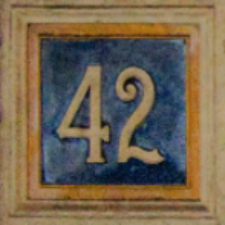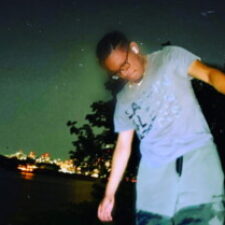The topic ‘’ is closed to new replies.
- Participation Activity, Session 3: Architectural Influences of My Youth
-
September 1, 2021 at 11:06 am #74476

Jennifer SearsParticipantHere is the Discussion Board for Session 3! Hit “reply” to respond. For instructions read the Session 3 To-Do List:
https://openlab.citytech.cuny.edu/eng1101-lc78-fa21/2021/09/01/to-do-list-for-session-3-sept-3-2020/September 2, 2021 at 12:33 pm #74507
Norah AbrahamParticipantPaul Goldberg wrote a biography about Louis Kahn’s life an esteem architect that lived from February 20, 1907 to March 17, 1974, the context in which he wrote explained the historical background of Louis Kahn inspirations, and what inspired Kahn to create the building that have stood the test of time to date. Louis Kahn is a well known architect known for his modern ancient inspired buildings, Paul Goldberg states in his text, “He discovered the power and beauty of Roman ruins and when he came back to the United States his architecture had less glass and more masonry, and instead of being light and airy it was sold and heavy and full of simple geometric shapes not unlike ruins.” Goldberg is stating that Kahn was modernizing ancient inspired Roman structures that was built with a long lasting composition. Louis Kahn made sure his work was made and constructed in a way that time would have a hard time to deteriorate. Kahn also was influenced by the building he grew up around in his hometown Northern Liberties. North Liberties had factory designed buildings which shows the root of his inspiration and factory based buildings also played a big role in Louis Kahn’s inspiration and work.
What inspired me most that caused me to understand the form of design that I do and plan on building as a future architect would be glass modern structures as a well as brownstone townhouses. What I used to see a lot as a child and still do see til today would be glass buildings such as the Freedom Tower I was fascinated by the modern suburban look of glass structures and the natural light that reflects on and in the building. Living in Brooklyn, New York, you come across different neighborhoods with their own personality, when I say that I mean all types of different structures and designs that bring some sort of character to the neighborhood. A neighborhood that would be a great example of that is the neighborhood, Park Slope you find a lot of different unique brownstones that has different types of outstanding high ceiling paneling, as well as intricate carvings and designs on the outside and inside of the building that left me intrigued as a child and as a young adult. I do plan on eventually being able to have my art along the streets of New York one day.
FOR PROFESSOR SEARS
I’m the first person to post on the discussion board I’m gonna come back and edit and adjust my 3rd paragraph to the person after me.September 2, 2021 at 6:32 pm #74536
JosephParticipantPaul Goldberger Wrote about the life of Louis Kahn. He made sure to give us the death of Louis Kahn first as well as adding details like how he looked, and the trouble it cost to identify him. Goldberger makes sure to give us more information about Louis Kahn’s life like how his professional life was similar to his personal life. Goldberger states, “ Kahn’s professional life seemed to be in a kind of vague disarray that paralleled his personal situation. His office was above a cigar store in downtown Philadelphia. Old coffee cans were plunked on top of drafting tables and used as ashtrays.” Goldberger added this right after taking about Kahn’s family life because it gives us an idea about how he is just like us his life is not perfect he goes through struggles, his work place is messy but will always get the job done. Just like anyone of us. For Kahn’s architecture work he try to be different from the rest, he makes his buildings look strong
Buildings, light and space from my childhood might inspire me for my future architectural designs because seeing glass buildings all over Manhattan really brings attention whether you are close or far because it will always reflect light onto you and as a little kid it looks cool. But something that also interest me as I was growing up and now are contemporary style houses, not only by how simple they are but how unique their style is because it gives you that mixture of modern and present houses, since they have a lot of windows but also has that look of a normal house.
Norah, I agree with you some neighborhoods have their own style especially when you go to queens or Brooklyn some places have different building structures, and the freedom tower is a great example of a modern glass structure since it something that really catches a persons eye.
September 3, 2021 at 8:36 pm #74576
AnthonyParticipantIn many mansions, Golberger shed a lot of light on Louis Khan’s biography and what really goes into his designs. Some of the things that was surprising to the author is that Khan was actually in debt despite his success in his buildings. This was pretty inspiring as it showed how Khan was passionate about designing his structures. This keeps on going as Khan sometimes likes it when his client rejects a design or requests a change since he loves to provide alternatives of a single structure to see the many different ideas and possibilities he can explore. Golberger stated that “the roots of Kahn’s style are not in Rome but much closer to home”, leading to the possibility that his inspirations for his buildings were actually from his childhood city in a part of Philadelphia. This goes to show how behind all of the iconic buildings that an architect designs, the architect themselves may have as much of a unique life as their architectural styles.
The buildings and spaces in my childhood would influence my designs as they inspired me to create beautiful spaces that also serve a vital function. Places and buildings that inspire me are Grand Central terminal and green buildings that use organic material or use less energy in general like the Eastgate Centre in Zimbabwe. A building like Grand central and many other pre-world war major railway stations inspires me because of the sheer amount of grand and luxurious expression that was put into an otherwise ordinary train station. Buildings like this makes me realize how it is possible to design something to be very beautiful and satisfying to look at while also being a mundane office or factory for example. Green buildings also inspire me because of the woes of climate change and urgent need for more sustainable development. Using Green designs in architecture allows for lots of interesting innovations like using mycelium or plants to create alternate concrete. The spaces that these kinds of designs provide are also more pleasant as addition of more plants both serve to make an area cooler but also provide a much nicer looking area too. Overall, grand and ornamental buildings from the gilded age and green buildings will certainly have an affect in the architectural plan that I may create in the future.
Joseph, I also agree that the glass skyscrapers across manhattan are cool and in some cases, possibly futuristic looking. The contemporary houses do certainly show how even simple shapes and designs can still lead to something that looks unique and interesting.
September 5, 2021 at 4:10 am #74598
Jennifer SearsParticipantWriters,
Thank you to those who have posted your ideas on our discussion board. Your writing about Brooklyn brownstones are well detailed. Brooklyn neighborhoods indeed have their own architectural personalities. Anthony, your interest in modern buildings and the use of glass and light sound like an interesting contrast to Kahn’s preference for making buildings “strong,” as you state. Anthony, your description of Grand Central Station is inspiring. The use of light and space and expansion make that public space something that goes beyond mere functionality. (I’m wondering if any of you have been inspired by the new Penn Station.)
The three of you who’ve gone so far also write well about the article on Louis Kahn. Those who go next might respond to to quotes by Kahn that the writer of this article uses. Do you think bricks or other materials “talk”? What does that mean? What are the materials of the buildings that inspired you when you were young?
I look forward to reading more responses! Remember to get them in by the end of the day on Tuesday.
Prof. Sears
September 6, 2021 at 4:01 pm #74633
Arely DelgadoParticipantIn “Many Mansions” Paul Goldberger wrote about the life of architect Louis Kahn. The essay is started off by mentioning the death of Louis Kahn. Along with that, paul mentions Kahn’s architect work, to talk about he wasn’t just some random guy that died in Penn station. Goldberger also mentions Kahn’s personal life, khan had three families which were not known till later on because of how private khan was. Kahn’s architectural style is not inspired by his trip to Rome but more by the area he grew up in. “He didn’t want his buildings to appear to be so light that they could float off the earth, like Mies van der Rohe’s, and he didn’t want them to have swooping, eye-catching shapes, like Eero Saarinen’s, or to be full of decoration, like the work Philip Johnson and Edward Durell Stone were doing in the nineteen-sixties. Kahn’s buildings are tough.” – Paul Goldberger. I liked how paul compared Louis Kahn’s work to other architects. If you look up all these other architects’ structures you can see the difference between their work and Kahn’s work.
Growing up in Brooklyn I was surrounded by all types of houses. But mainly “brick Houses”. I enjoyed going to the city and seeing all these glass buildings that I wouldn’t usually see in Brooklyn. All these neighborhoods in NYC really do have their own architectural personality. I really like Modern glass structures.
I agree with Anthony when he says that the skyscrapers in Manhattan look futuristic. I see homes in my neighborhood that have been remodeled into a more modern/contemporary style. Which makes that particular home stand out since it doesn’t look like the rest.
September 7, 2021 at 2:43 pm #74637
Jean LucasParticipantPaul Goldberg wrote the biography of architect Louis Kahn. It starts off explaining his death at a restroom at Penn station. Later on, shows that Louis Kahn was the most celebrated architect in the United States. The author starts describing Kahn as he says he was a 73-year-old man with messy hair and scarred face. The author describes Kahn’s architectural work by stating that he combined materials in an unusual manner for example he used wood panels and set them up into concrete frames. Kahn Will use the basic tools of architecture such as space, proportion, light, texture. Goldberg explains that Kahn didn’t want his buildings to look so light and have descended eye-catching shapes. Later on, the author states that Kahn was working on a project in Bangladesh for the last twelve years until Bangladesh declared independence and Kahn’s contract was terminated and his construction was stopped. he was later on hired back the year after but unfortunately his project wasn’t finished until nine years later after his death.
The buildings that surrounded me as a child inspired me to go into college and major in architecture, being born in manhattan and being surrounded by skyscrapers such as the empire state building and one world trade center, and the Chrysler building And not only that you got the madison square garden which is ironic because it’s shape is a Circle. The design in the Chrysler building amazed me as a child and made me wonder what made the architect come up with that idea of design. Every building in the city has its own unique style because we have the buildings that were built in the 1920s and 30s and now in this new generation we have new buildings that look nicer.
I agree with Arely because being born in manhattan and seeing all the glass buildings and then visiting the Bronx, and Brooklyn it was different but things have changed now because every time I go to Brooklyn I see these new beautiful buildings.
September 7, 2021 at 4:48 pm #74641
Norah AbrahamParticipantI agree Joseph, I believe that contemporary houses are a structure you can’t ever go wrong with, it fits the modern style as well as the traditional style with its modern twist. I also agree with the way Joseph explains how lighting is also a really important factor that attracts a persons sense of memory especially as a child.
Professor Sears : it wasn’t allowing me to edit and add this Into my 3 paragraphs.
-
This reply was modified 2 years, 7 months ago by
 Norah Abraham.
Norah Abraham.
September 7, 2021 at 8:12 pm #74643
TamaraParticipantPaul Goldberg wrote a biography about Louis Khan’s life as an architect. In this piece Goldberg really went into full depth. He lead this piece with telling us how Khan died and within doing so he gave a full description of what Khan had looked like. Goldberg mentioned Khans life outside of being an architect. He mentioned how Khan had 3 kids whom each had different mothers. It was also mentioned that Khans life was very private because he never much spoke about it. When Vincent Scully wrote the first book on Khan’s work he himself was unaware that Khan was married nor did he knew that Khan even had one family. Goldberg also explain the historical backgrounds and inspirations of Khan’s buildings. It was mentioned that Khan’s inspirations came from “not in Rome but much closer to home”. Khan’s inspirations merely came from his childhood home where he grew up. His designs where different and unique because they all had a meaningful connection to his childhood home in Philadelphia. Khans work was compared different to other people because of his connection to his work. Which is what makes him special.
The building that are surrounded around me as I live in NY makes me feel curious as to how these certain buildings were build. From there on I wanted to know how could these buildings be built better or what structure would have been a better use for each building. Walking through Manhattan and seeing the different shapes and compositions of each building tends to amuse me. Even going to stores like Home Depot as a kid with my fathers had me so fascinated by seeing the amount of different objects that a building could be built with. Looking back at the amount of schools I’ve been to and the amount of houses and apartments I lived in, never had I ever realized how each building was built till now. Look back at those building now amazes me. I think of each corner, each material used on each floor, each different shades of paint on each wall, each different types of tiles used in each bathroom, each different type of woods and shades of it used on different parts of the buildings. All of it is honestly so memorizing to me now.
I agree with Jean. Many buildings in Manhattan are so popular and different. Many of them are also so very unique because of how old they were built. What curious me is what materials did each builder use to make sure that their building would stand up and last for so long. Some of the buildings in Manhattan are so confusingly built that it hurts my head trying to think how could someone even think about building something so outstanding. It really does show how open minded we are and we don’t even know.
September 7, 2021 at 10:28 pm #74648
NoumanParticipantIn “Many Mansion” Paul Goldberg wrote a biography about the life of an architect Louis khans. At the beginning Paul mentioned about how khans died of a heart attack in Penn station on march, 1974. At first Paul thought khan was a normal man until he researched on him and figured out he was one of the preferred architect in the United States. Before khans died he was nearly done with many projects he was working on in different countries like Indian, New haven, Bangladesh and British. Paul Goldberg also mention about his life style and described how he looked like and went briefly in his personal life, Paul also stated that khan had 3 kids. Throughout the reading Paul explained the meaning behind Kahn’s work that what make his work graceful and what inspired him to become an architect. As I was reading through the piece Paul stated “ When Nathaniel and Susan walked through the streets of Northern Liberties, it became clear that the roots of Kahn’s style are not in Rome but much closer to home.” this highlights that Kahn’s work is inspired by his childhood memories which make it even more rare that he was grown between those buildings and work of art and he still have them memorized, his work fascinating because he try to connect the stuff his working on with his childhood.
Throughout my childhood I have been surrounded around a lot of different type of buildings which has always made me wonder that how does they manage to go that high up and what material they used that made the structure this strong that it’s impossible to break it down. When I was 13 the building that made me want to go in deep with architect and choose this as my major was burj Khalifa the structure, interior and the way it was built grab my attention to the point I started researching on documentary about how it was built. Another reason I decided architect as my major is my dad is a construction worker and in my free time I always go with him to his work site and try to learn about the work they are doing and it looked interesting at first and this made me want to keep architect as my main line.
I agree with Joseph, it’s crazy to see all those buildings and by looking at them one thing always come in my mind is that how are they built because most of the building are from 1900’s which make me always wonder how are they still holding, what material people used that time that’s so good that they still hold their own balance.
September 7, 2021 at 11:07 pm #74649
Mike SanangoParticipantPaul Goldberger, an American architecture critic, wrote a biography about Louis Kahn’s life in detail titled “Many Mansion” published on the fifth of November in 2001. Paul Goldberger starts this piece off by naming most of Louis Kahn’s completed and uncompleted projects before his death caused by a heart attack in the men’s room at Penn station. One of Louis Kahn’s uncompleted projects that caught my attention was the Yale Center of British Art because it was a project that was discussed in one of my architecture courses as it holds one of the biggest collections of British art outside of the United Kingdom. Paul Goldberger goes on and gives the readers a full detailed description of Louis Kahn’s appearance, which shows how he was one of the most celebrated architects in the United States at the time to the point where people were able to identify him just by his rumpled suits. Paul Goldberger also gives an insight into his personal life outside of work. For example, Paul mentions, when he was a younger architect critic, he didn’t know until several years later Louis had three families in total as Louis doesn’t speak too much about his life. Paul also goes into depth about how Louis Kahn became special by mentioning “Kahn used the basic tools of architecture,” such as space, proportion, light, and texture.
I would consider myself very lucky as I live in a place, called New York, where most of the buildings around me are designed in their unique way. For example, The Empire State Building in Manhattan would always be one of those buildings that just captures your attention instantly when you walk around or think about Manhattan, as it’s one of the tallest skyscrapers in New York. Even when you think about the significance of the Empire State Building for New York during and after the Great Depression, this was a building that was questioned by many whether it should be built or not, to becoming a symbol of prosperity and one of the most iconic places in New York. I was amazed by the Empire State Building as a kid when I watched a documentary or movie in school that showed how much time, effort, and sacrifices it took for people to build a building that high. Another piece of architecture that has captured my attention would be the Rockefeller Center as it was one of the places where you just can’t believe exists as a kid because of how amazing it looks.
I agree with Nouman, the Burj Khalifa is one of those buildings that just impress you instantly when you think about what it means for Dubai. Not only does it symbolize the progression of Dubai but its physical proof. I can relate to what Nouman said about research because I have also researched certain buildings that impressed me the most as a kid and even now. I just think it’s interesting to know the background history of certain buildings.
September 7, 2021 at 11:52 pm #74650
BosaParticipantIn “Many Mansion” Paul Goldberg wrote a biography about Louis Kahn the architect. Louis kahn was born in Estonia in 1901 and lived his life in Philadelphia at the age of five, Louis kahn was a very interesting man when it came to his personal life but as well when it came to his occupation as an architect. He was a very interesting when it came to his work , something that defiantly caught my eye is that he was very poetic when it came to his work and as it stated in the text, He would say, “I asked the brick what it wanted to be, and it said, ‘I want to make an arch.’ ” Or, “The sun never knew how great it was until it hit the side of a building.”. I just think as I was reading it just made me think instantly that being yourself is the best option because everyone is already taken. The reason I am saying that is because, while reading this it was so cool to see that how people looked at his style when it came to his craft, like for example it sates again in the text, He didn’t want his buildings to appear to be so light that they could float off the earth, like Mies van der Rohe’s, and he didn’t want them to have swooping, eye-catching shapes, like Eero Saarinen’s, or to be full of decoration, like the work Philip Johnson and Edward Durell Stone were doing in the nineteen-sixties. Kahn’s buildings are tough”. I think that last statement has a lot to say about how he stood out and how his buildings stood out it wasn’t just a building to him it was art that had to mean something to him as well as caught your eye and really had you thinking in many very different ways. He died on March 17 , 1974 but something that I believe in is that with hard work you can accomplish anything and having faith. Louis kahn grew up in poverty, to then go to an art school, and then go to the University of Philadelphia on a scholarship, to then becoming a alright or moderate architect, then to become a big time guy with his work on The kimbell Dacca. He defiantly was very outstanding architect that has given inspiration many aspiring architects around the world.
As I have grown up I seen many building as well as houses or complexes that have defiantly caught my eye. the one that catches my eye even today is the WTC ( World Trade Center) . The reason being is because, it is a very significant building that holds a ton of stories and passion as New Yorker I was yet the year on 9/11 but I know the horrific things that happened that day, but with the new one being built it shows that as state and as a nation that if we get knocked down if you can pick up everyone and we all help each other that we can get thought the worst things and tragedies. I think that the building it self is just so pleasing to look at especially that triangle going down the top on the building.
I agree with Arely, because that is true that Brooklyn has it own personality especially the brick houses in Brooklyn that are a staple but not only just in Brooklyn but also in all the five boroughs. I think it cool as well as nice to think how that material of brick can be used in its own way and expand in other boroughs as well as it has its own story with each neighborhood it is in with many different people.
September 8, 2021 at 12:42 pm #74652
FolaboParticipantLouis Khan’s life as an architect was chronicled in a biography by Paul Goldberg. Goldberg went into great detail in this article. He began this article by telling us how Khan died, and in doing so, he provided a detailed description of Khan’s appearance. Khan’s life outside of his work as an architect was highlighted by Goldberg. Before he died, Khans was virtually finished with a number of projects he was working on in nations such as India, New Haven, Bangladesh, and the United Kingdom. Paul Goldberg also discussed Khan’s living style, describing how he appeared and briefly discussing his personal life. Paul also said that Khan had three children. Throughout the reading, Paul discussed the significance behind Kahn’s work, as well as what drove him to pursue a career as an architect. Louis Kahn grew raised in poverty, went to an art school, received a scholarship to the University of Pennsylvania, became an okay or middling architect, and then became a big time man with his work on The Kimbell Dacca. He was unquestionably a remarkable architect who has served as an inspiration to many aspiring architects all over the world.
Growing up, I was fascinated by the Empire State Building in New York and the CN Tower in Toronto. When I first heard about the Empire State Building from school, I was fascinated. I didn’t realize it at the time, but it demonstrated how much time, work, and significance a structure of that height required. The CN Tower’s height, but more significantly, the pod, drew my attention. It always astonished me how a pod could stay so close to the structure’s top.
I agree with Bosa that the World Trade Center “is a very significant building that holds a ton of stories and passion” because of the tragedy caused by 9/11 did not stop New York from recreating it. This shows how we bounce back after taking a hard hit. I also like the design they went with.
September 9, 2021 at 11:46 am #74661
Kevin SierraParticipantMy thoughts while reading “Many mansions” by Paul Goldberg was that this is essentially a biography for the very respected Louis Kahn.Louis khan was a very credited architect and as a result he was the most celebrated architect in the United states due to his contributions of the Kimbell art museum and the a series of government buildings in Bangladesh. Throughout this reading of this biography one of the most peculiar sentences I recall reading would be on page 1 where it says “ And the authorities who dealt with his body didn’t recognize his name” The reason i found this peculiar or interesting is because to the people of the architect world he was an icon a superstar if you will but to others he was just your typical 73 year old man. Overall my thoughts while reading this passage was that Louis Khan had a very complex mindset and his ideas completely revolutionized how future architects would approach their future compositions.
Buildings,light and space are all key components architects have to think of when making their vistas come alive.Even though I am not an architect I believe one of the main components I would focus on is the light aspect. This correlates directly to the building that influences me the most and it would be my old apartment in Astoria and what made this a very influential to me is it made me value the influence of light in one’s life. The apartment I used to live in was very dark and had almost no lighting and as a result this made me and my family feel a sense of gloom and sadness. Along with the absence of light it was a very confined space and that just added fuel to the gloomy fire. This experience helped me in the long run to appreciate the beauty of natural lighting and in the future to be more conscious of how to arrange certain aspects of my building to allow light and space to shine.
In Jean’s writing he talks about him being born in manhattan which is probably the architect mecca.You walk around the corner of any block and u can probably see an architectural digest just towering upon you.Jean is essentially saying that he uses his environment to inspire and fuel his creativity. This is quite apparent when he talks about buildings such as the Chrysler building and madison square garden which are some of the most world renowned structures of all time. Overall Jean offered some great insight on how his surroundings influence his architectural mind.
September 9, 2021 at 3:16 pm #74666
Arjay RajapaParticipantPaul Goldberg was the author of the biography of architect Louis Kahn. The author starts teh biography by talking about Khan’s death in a bathroom at Penn station. Then he mentions how Kahn was the most celebrated architect in the United States. Khan, as the author described him, was a 73-year-old man. Kahn would bring together different materials, to create different architecture styles, just like how he used wood panels to and set them up like concrete. Kahn utilized the most important tools of architecture like space, proportion, and texture. The author starts talking about Kahn’s project in Bangladesh that he worked on for 12 year, but then Bangladesh declared independence and Kahn was not permitted to work on it anymore. Years later he was rehired but he did not finish the project because he died, but the project was completed 9 years later.
Living in New York City is what inspired me to pursue architecture in college. Going to Manhattan and seeing all the skyscrapers and going to the east side and seeing all the different architecture styles made me want to learn how to draw them and build them. Going to Brooklyn was my favorite because all the Redstone buildings and the architecture of older buildings interested me as well. Architecture felt like the perfect fit because I was always so curious as to how buildings were designed.
I agree with kevin because i’ve also been in that situation of feeling dark and gloomy, i’ve always wanted to design buildings with a lot of natural lighting so no one ever has to go through living in the dark.
-
This reply was modified 2 years, 7 months ago by
The topic ‘’ is closed to new replies.


